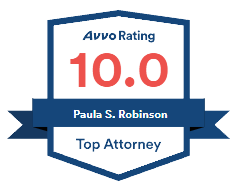An injury or illness is considered to be work-related, if an event or exposure in the work environment contributed to the resulting condition. It may also have significantly aggravated a pre-existing injury or even illness.
An injury or illness is a pre-existing condition if it existed prior to the work-related event or exposure. Most times, pre-existing conditions are asymptomatic, meaning that the individual does not have any ongoing symptoms that prevent them from working or living a normal life. A pre-existing injury may be “significantly aggravated” in the following ways:
· Death, provided that the pre-existing illness or injury would likely not have caused death but for the occupational event or exposure.
· Loss of consciousness also provided that the pre-existing injury may not have caused the loss of consciousness but for the occupational exposure or traumatic injury.
· Seven or more days away from work, days of restricted work or days of transfer to a different department or work area that otherwise would not have occurred but for the occupational event.
· Medical treatment in cases where no medical services were needed for the injury before the workplace event.
However there also are situations where an injury occurs in the work environment and is not considered work-related. An injury occurring in the work environment and falling under one of these exceptions may be considered by a Pennsylvania Workers’ Compensation Judge to be not work-related:
i. At the time of the illness or injury, the employee was present at the work environment as general public rather than as an employee.
ii. The injury involves signs and symptoms that surface at work but result solely from non-work-related event or exposure that occurs outside the work environment.
iii. The illness results from voluntary participation in a wellness program such as blood donation, flu shot, physical examination, or exercise class. It also includes sporting activities such as racquetball or baseball.
iv. The injury is solely the result of an employee eating, drinking or preparing food/drink for personal consumption. However if the employee is made ill by ingesting food contaminated by workplace contaminants; example lead, or food poisoning from food supplied by the employer then the case would be considered work-related.
v. The injury is the result of an employee doing personal tasks at the establishment outside the employer’s stipulated working hours, and not within the course and scope of their employment.
vi. The injury is intentionally self-inflicted.
vii. The illness or injury is caused by a vehicle accident and it occurs on the company’s parking lot or access road while the employee is commuting from work.
viii. The illness is the common cold or flu. However contagious diseases such as TB are considered work-related if the employee is infected at work.
ix. The illness is a mental, as opposed to a physical injury case.
Every case is fact specific, and arguments are made on behalf of the employee and the employer. There is case law that is used to support both sides, and if an agreement cannot be reached as to whether the case will be accepted as being work related, then it will be up to a Workers’ Compensation Judge to determine the outcome.
Below is a list of the 5 most common work related injuries.
i. Musculoskeletal injuries
ii. Slip, trips and falls
iii. Repetitive motion injuries
iv. Machinery and equipment
v. Motor Vehicle accidents
The causes of these work related injuries include.
i. Overexertion, fatigue and prolonged static posture for musculoskeletal injuries. Another contributing factor is repetitive stretching and over lifting
ii. Wet slippery floors and objects on the floor causes slips and falls.
iii. Inadequate lighting and loose carpeting can cause trips.
iv. Fixed position activities such as keyboard use cause repetitive motion injuries.
v. Loose clothing, shoes and unbound hair are a potential machinery and equipment accident.
So as to prevent the occurrence of work-related injuries, the following prevention measures should be taken.
i. Changing positions frequently and setting up a properly stationed workstation.
ii. Keep work space clean and use signage to indicate slippery conditions.
iii. Train employees to reduce frequency of activity and encourage them to take breaks.
iv. Employees should know the safety precautions of the workplace.
 v. Wear protective equipment and store materials in a safe and secure manner.
v. Wear protective equipment and store materials in a safe and secure manner.









